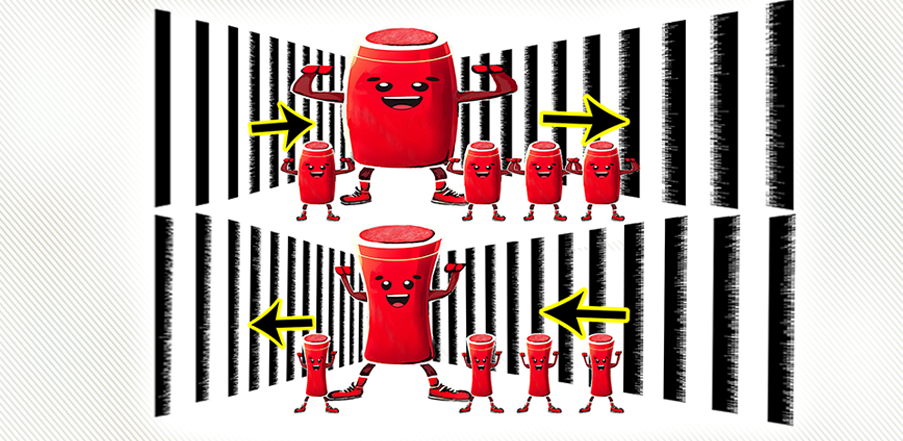Speculation that a Russian invasion of Ukraine is ‘imminent’ has reached fever pitch, stoked by increasingly urgent warnings from the US and its allies.
With some 100,000 Russian troops massed on the Ukraine border, US Secretary of State Antony Blinken has warned that an invasion could happen at any time, and several countries including Australia have warned their nationals to leave Ukraine immediately.
Meanwhile, the rhetoric from the Western media has been reinforcing a view of Russian President Vladimir Putin as a dangerous and unpredictable antagonist in global politics. However, foreign policy-wise, what we are hearing from Russia is nothing new.
Russia’s foreign policy with regards to its nearest neighbours has remained largely unchanged in the thirty years since the fall of the Soviet Union – that any expansion of the US-led NATO alliance would be viewed by Russia as an act of aggression.
Particularly, since the mid-1990s, Russian officials have explicitly called out the potential for NATO membership to be extended to Ukraine and Georgia as a sufficient condition to cause confrontation with the West, if not war.
By taking a geopolitical view of the current crisis then, it seems unlikely that we will see an invasion of Ukraine by Russia anytime soon, as the US administration has been anticipating. There are three key reasons to be sceptical of a Russian invasion of Ukraine.
First, we can read the massing of troops both as a defensive manoeuvre that fortifies Russia’s southwest border and as a signal to the West of the seriousness with which Russia views the position of Western forces on its doorstep.
Since his election, US President Joe Biden has been offering military aid to Ukraine to support that country’s war efforts against separatists in the eastern Donbas region, bordering Russia. This has prompted fears in Russia that US missiles or defence systems will be deployed on Ukrainian soil.
If we read Russia’s military build-up through a defensive lens, recognising their primary interest as preventing Western military expansion or the stationing of Western troops in Ukraine, an invasion of the country would result in just the opposite. An invasion of Ukraine would force Western countries to increase their own military preparedness for war with Russia, if not mobilise to act in defence of Ukraine, further reducing Moscow’s security.
Second, Russia’s geopolitical strategy since the fall of the Soviet Union hasn’t tended to involve overt aggression, particularly towards the West. While often named as an antagonist in the conflicts in which it’s been involved, Russia’s foreign interventions have been based on pragmatic consideration of proportionate force necessary to meet its interests.
Its most recent interventions in Georgia, Syria, and Libya have shown that Russia states its foreign policy intentions, follows through with the force they deem necessary to achieve the objective and go no further.
Russia’s recent history with Ukraine is a perfect example. Though conspiracy theorists have decried the 2014 annexation of Crimea as just the beginning of a greater plan to realise ‘Novorossiya‘ or reclaim the Soviet Empire, Russia didn’t use that opportunity to conquer further Ukrainian territory.
Which brings us to the third indicator. If the seizure of Ukrainian territory was significant to Russia’s interests, we would have seen an invasion occur earlier, when Russia’s military advantage over Ukraine was much greater. If ever there was a time for Russian troops to sweep through Ukraine, 2014 was it.
The Armed Forces of Ukraine (AFU) had been severely impacted by the purge of officials that followed the Euromaidan revolution that ousted the Russia-oriented government of President Viktor Yanukovych, with most senior officers removed from their ranks. It meant that the AFU had very limited resources at their disposal and relied on volunteers to both arm and fight in the war that broke out in the eastern region of Donbass.
Many purport that the secessionist movements of the Donetsk People’s Republic and the Lugansk People’s Republic that has resulted in a now eight-year-long armed conflict in Ukraine are acting at the behest of Russia, and are part of a grander ambition of Russia to seize control of Ukrainian territory.
However, it is more accurate to say that these independent, separatist movements receive material support from Russia because conflict in Ukraine further frustrates Ukraine’s efforts to integrate more closely with Europe, the prospect of which is viewed by Russia as a security threat.
Given that most of these conditions have remained largely unchanged for the past eight years, what’s different now to escalate tensions?
To understand our current situation, we need to think about the relationship between Russia and Ukraine, historically.
Russia and Ukraine have long shared a close relationship, based on notions of fraternity born out of shared religion, history, and politics. In Kyiv, a 50-metre tall titanium arch known as the People’s Friendship Arch historically memorialises the relationship between the two states.
However, since the 2014 Euromaidan revolution, Ukrainians have been actively distancing themselves from Russia and their communist past. This has involved both symbolic actions like the promise of the Ukrainian government to dismantle the Friendship Arch, and strategic shifting of the country’s foreign policy away from Ukraine’s formerly eastern orientation towards Europe and hopes of European integration.
The belief that Europe held the solution to Ukrainian economic and social woes that had been deepening in the country since independence was the reason for the 2014 Euromaidan revolution.
Russia hasn’t responded to Ukraine’s reorientation toward Europe passively. Immediately following the removal of Yanukovych, who was perceived by the majority of citizens in Kyiv and Western Ukraine to be under the thumb of their ‘big brother’, Russia annexed the Crimean peninsula and has been supporting the separatist movements that emerged in the eastern regions of Ukraine.
Despite orienting westward since 2014, the Ukraine-Russia brotherhood has been freshly strained by the post-Biden election manoeuvres of President Volodymyr Zelenskyi’s government to reduce ‘Russian influence’ in the nation’s politics.
After winning the 2019 presidential election on a campaign of ‘change’ and a populist platform of being dissociated from established parties and political forces in the country, Zelenskyi has since been accused of pandering to the far-right in the country.
This may be behind his government’s decision in 2021 to target the Kremlin-friendly politician Victor Medvedchuk and his political organisation Ukrainian Choice. Accused of supporting terrorism for allegedly financing separatists in Donetsk and Luhansk, Medvedchuk was placed on the Ukrainian sanctions list and subsequently under house arrest.
It was only days later that Putin began mobilizing armed forces to the border with Ukraine.
The military build-up has since grown to more than 100,000 troops amassed near Ukraine’s eastern border, supplemented with an arsenal of heavy artillery, tanks, and ballistic missiles. And so far, this has been enough to achieve what Moscow desires.
The fortification has had a serious impact on the Ukrainian economy. It has also forced Western powers to engage seriously with Russia to discuss issues of European security and their concerns regarding Western military expansion.
While Russia certainly has a vested interest in keeping Ukraine sufficiently unstable to prevent it becoming more economically and militarily integrated into Europe, the claims that they are planning an imminent invasion are overblown.
More likely, we will see continued pressure from Moscow in the form of military build-up on the Ukraine border, further use of war games, and other forms of signalling as a means to force Western powers to negotiate on limiting Western military capabilities in Eastern Europe.







